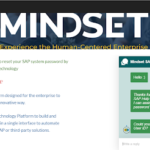Mike Berg is a Senior SAP Developer at Mindset. He leverages his 18+ years of experience across various SAP technologies and functional areas to bring optimal solutions for customers to light. Mike focuses on bringing the best user experience possible to users, which in turn maximizes ROI for the organization. He does this by emphasizing the correct technology, be it Fiori, Personas, or other, and by optimizing application performance and ease-of-use. Mike is a regular contributor to Mindset’s blog and development tips newsletter, as well as a speaker at SAP Sapphire and ASUG events.


